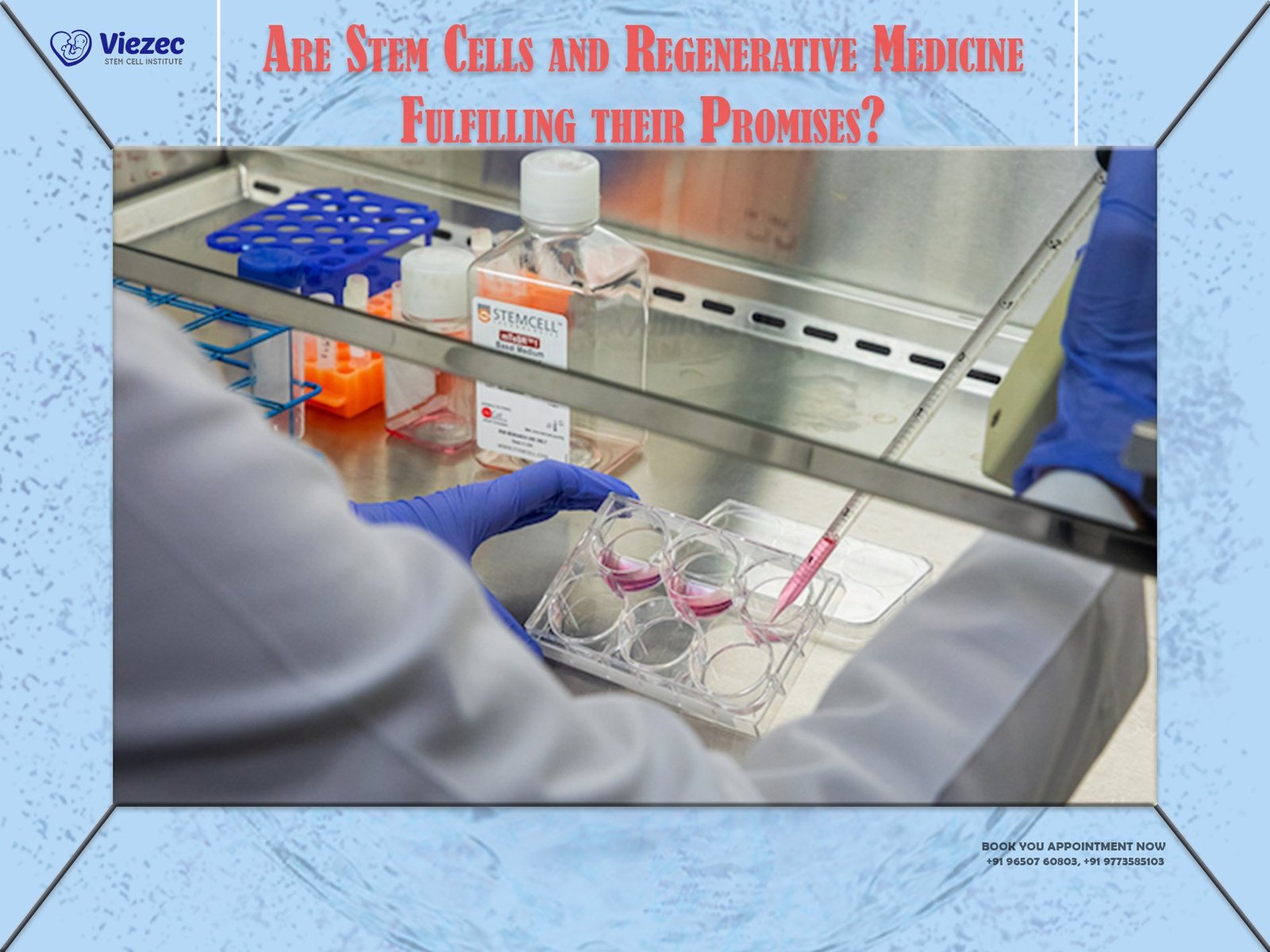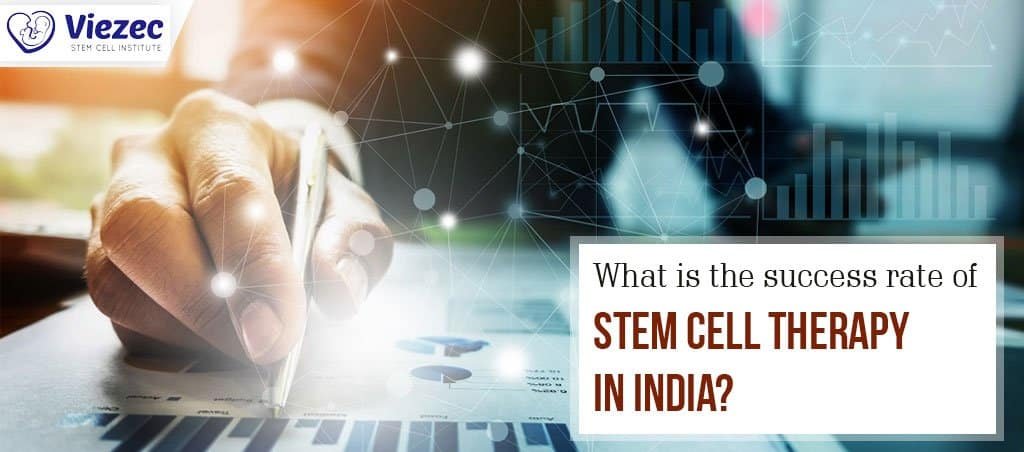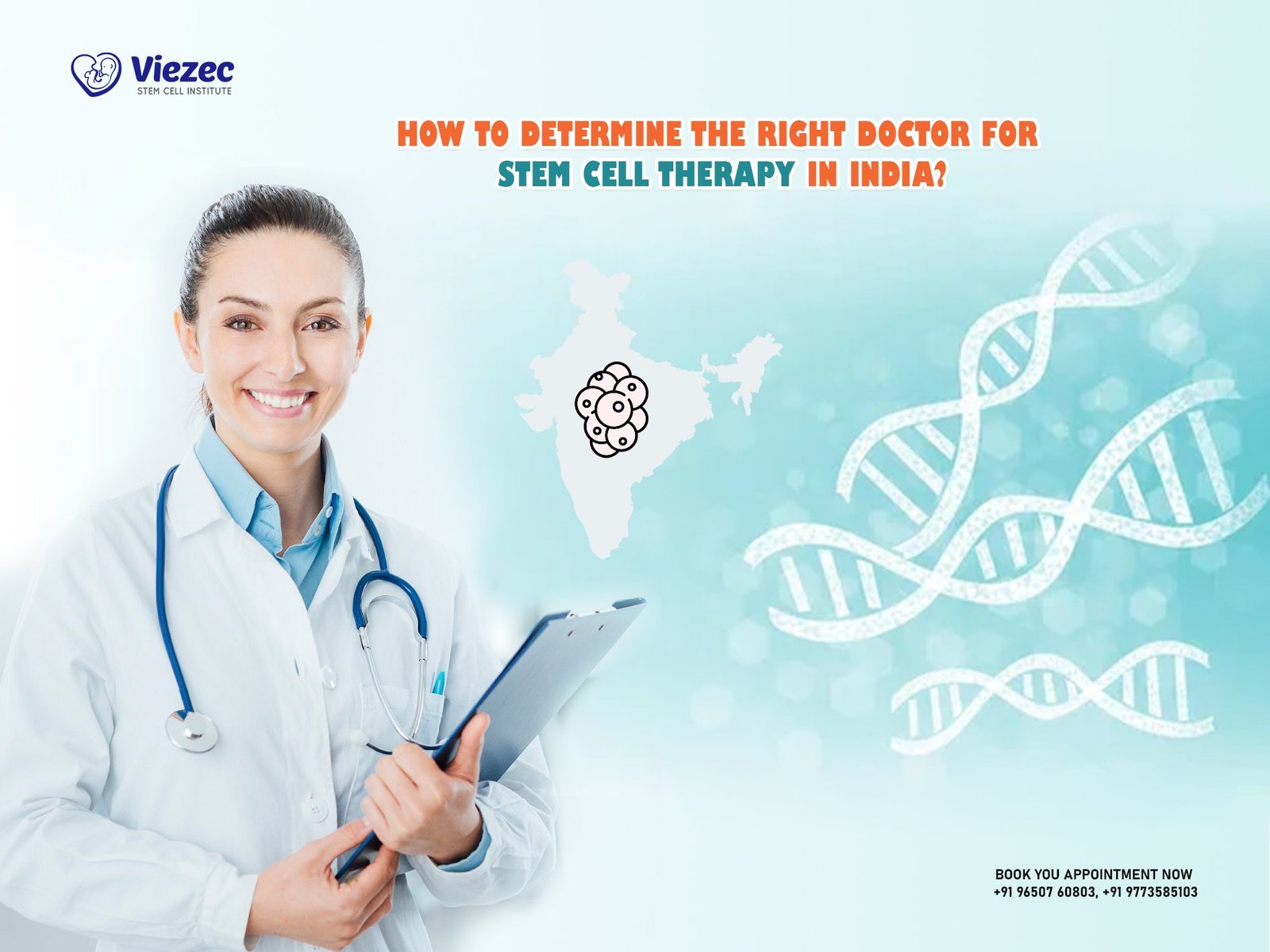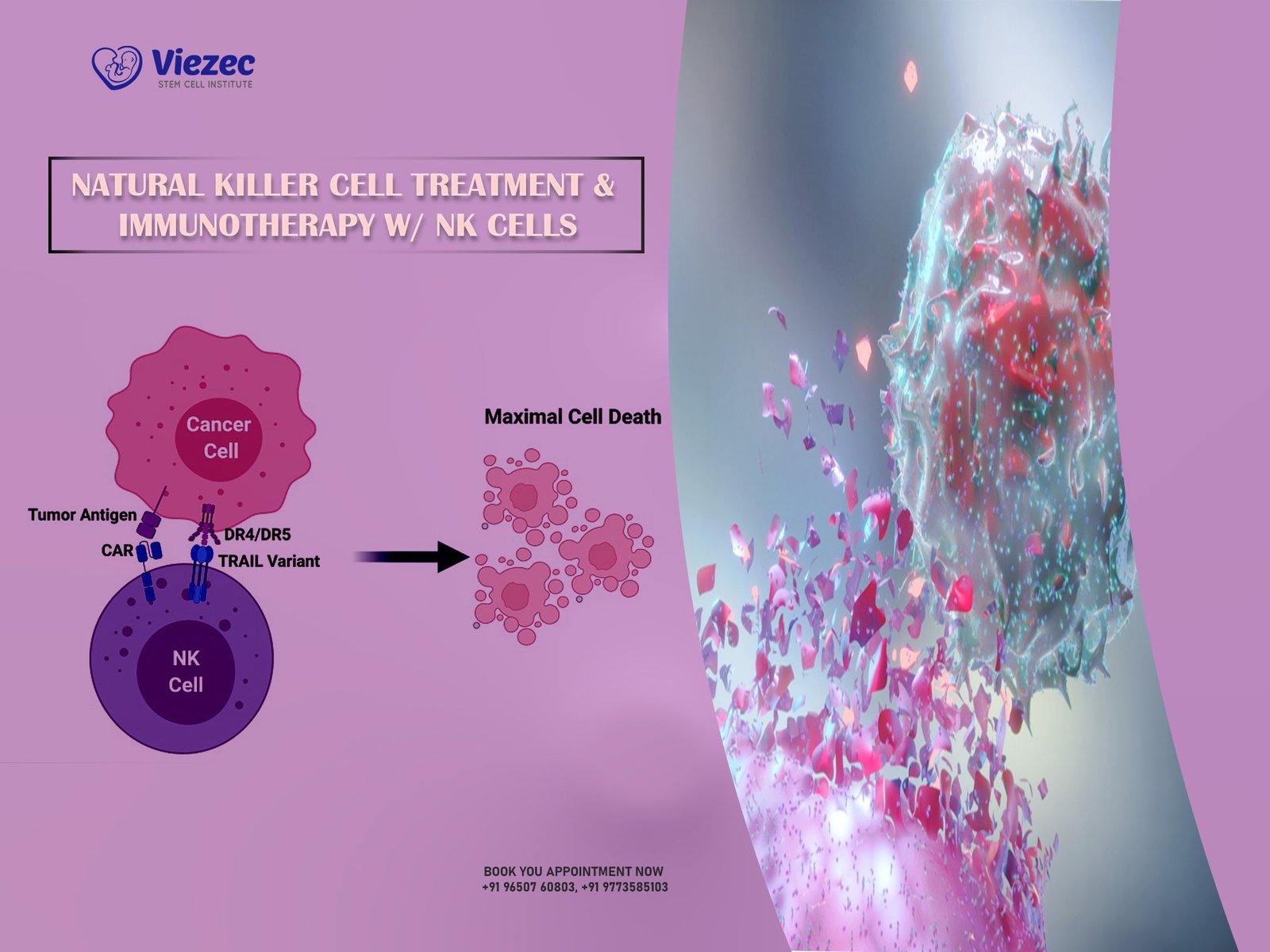Stem cells and regenerative medicine are at the forefront of a healthcare revolution, offering new hope for treating chronic diseases, injuries, and conditions that were once deemed untreatable. This article delves into the transformative potential of stem cells, exploring their ability to regenerate tissues, restore function, and accelerate healing. It covers key breakthroughs in stem cell research, landmark clinical applications, and areas where these therapies are showing promise, such as diabetes, neurological conditions, and orthopedic care. While the progress is exciting, the article also examines the challenges and ethical considerations that come with these emerging treatments. Finally, it looks to the future of regenerative medicine, highlighting innovations and expert forecasts on how stem cells may reshape the medical landscape in the years to come.
Introduction to Stem Cells and Regenerative Medicine
What Are Stem Cells and How Do They Work?
Imagine cells in your body that can become almost anything—muscle, bone, nerves, or even heart tissue. These incredible cells, known as stem cells, have two extraordinary abilities: they can continually renew themselves, and they can transform into specialized cells needed to repair damaged tissue or organs.
There are three main types of stem cells, each serving distinct roles:
-
Embryonic Stem Cells: Derived from embryos, these cells can develop into any type of tissue, offering significant therapeutic potential. However, ethical concerns regarding their origin have sparked debate.
-
Adult Stem Cells: Found in specific tissues such as bone marrow, fat, or blood, these cells primarily help maintain and repair their original tissue types.
-
Induced Pluripotent Stem Cells (iPSCs): Created in laboratories by reprogramming adult cells (like skin cells), these cells offer similar versatility to embryonic stem cells without ethical concerns, revolutionizing the scope of stem cell research.
Together, these cells act as a powerful internal repair system, constantly rejuvenating your body and healing injuries or diseases at the cellular level.
Understanding the Concept of Regenerative Medicine
Regenerative medicine is the revolutionary field harnessing the incredible power of stem cells and other advanced therapies to rebuild damaged tissues and restore organ function. Rather than merely treating symptoms, regenerative medicine seeks to cure underlying conditions by stimulating the body’s natural ability to heal itself.
Key approaches within regenerative medicine include:
-
Stem Cell Therapy: Delivering healthy stem cells directly into damaged tissues to promote natural repair and regeneration.
-
Tissue Engineering: Combining stem cells with biomaterials to grow replacement tissues in the laboratory, offering innovative solutions for organ transplants and chronic wounds.
-
Biomaterial Science: Developing materials compatible with the body, which guide and enhance tissue regeneration, often accelerating recovery times.
By combining cutting-edge biology, materials science, and innovative clinical approaches, regenerative medicine offers hope where conventional medicine reaches its limits—turning previously untreatable conditions into manageable or even curable ones.
This promising intersection of science and medicine could dramatically change healthcare, improving lives and unlocking possibilities once thought impossible.
Historical Milestones in Regenerative Medicine
Key Breakthroughs in Stem Cell Research
The journey of stem cell research has been nothing short of remarkable, with significant breakthroughs steadily transforming scientific understanding and clinical potential:
-
Isolation of Human Embryonic Stem Cells (1998):
In a groundbreaking achievement, scientists successfully isolated human embryonic stem cells for the first time. This milestone opened unprecedented possibilities, enabling researchers to explore treatments for previously incurable diseases. -
Discovery of Induced Pluripotent Stem Cells (iPSCs, 2006):
In a revolutionary step forward, scientists discovered how to reprogram ordinary adult cells, such as skin cells, into pluripotent stem cells (iPSCs). This innovation drastically reduced ethical concerns associated with embryonic cells and broadened the horizon of regenerative treatments. -
Advances in Gene Editing Technologies (CRISPR):
Recent advancements like the CRISPR-Cas9 gene-editing tool have significantly boosted precision in stem cell therapies. Scientists can now precisely alter genes within stem cells, enhancing their safety and effectiveness in treating genetic disorders.
These groundbreaking discoveries continue to drive optimism, reshaping the future of healthcare by offering real solutions for complex medical conditions.
Landmark Clinical Applications
Regenerative medicine isn’t just theoretical; it’s already changing lives through pioneering clinical applications:
-
Bone Marrow Transplants:
For decades, bone marrow transplants have provided life-saving treatments for blood cancers such as leukemia and lymphoma. By replacing damaged blood-forming cells with healthy stem cells, countless lives have been transformed. -
Corneal Regeneration and Vision Restoration:
Stem-cell-based corneal treatments have successfully restored vision to patients with severe eye injuries and diseases. These minimally invasive procedures offer renewed sight and independence to those who previously faced blindness. -
Regenerative Skin Grafts for Burns and Chronic Wounds:
Patients suffering from severe burns or chronic wounds benefit tremendously from stem-cell-derived skin grafts. These innovative treatments accelerate healing, reduce scarring, and dramatically improve patient recovery and quality of life.
These landmark applications highlight regenerative medicine’s profound ability to deliver real-world outcomes, providing tangible hope to millions worldwide.
Ready to take the next step in your regenerative journey?
Book your appointment now to start your stem cell treatment journey with the experts.
Areas Where Stem Cells Have Shown Real Promise
Treatment of Chronic and Degenerative Diseases
Stem cells have opened new pathways for managing some of the most challenging chronic and degenerative conditions, bringing hope where conventional medicine often falls short.
Diabetes and Metabolic Disorders
Stem cells could fundamentally transform diabetes treatment. Researchers have successfully generated insulin-producing pancreatic beta cells from stem cells in laboratory settings. These remarkable advances hold the potential to restore natural insulin production in diabetic patients, reducing or even eliminating their dependence on insulin injections and medications.
Ongoing clinical studies show promising results, offering patients not only improved glucose control but a chance to live healthier, more independent lives.
Neurological Conditions (Parkinson’s, Alzheimer’s)
Imagine restoring function in conditions once deemed irreversible. Stem cells may hold the key for neurological diseases such as Parkinson’s and Alzheimer’s, which currently have limited treatments available.
Early-stage clinical trials and experimental treatments indicate that stem cells can regenerate damaged neurons, slow disease progression, and significantly enhance patient quality of life. While research continues, the potential for restoring cognitive and motor functions marks a turning point in how we approach neurological diseases.
Stem Cells in Sports Injury Recovery
In sports medicine, athletes are increasingly turning to stem cell therapy as a powerful alternative to surgery. From ligament tears to muscle and tendon injuries, stem cell treatments accelerate healing, significantly reduce recovery times, and often help athletes return to their peak performance faster than traditional methods.
With minimally invasive procedures and rapid regeneration capabilities, stem cells represent an innovative shift, redefining recovery for professionals and amateur athletes alike.
Regenerative Approaches in Orthopedics and Joint Repair
Joint pain, arthritis, and orthopedic injuries often lead to chronic pain and loss of mobility. However, stem cell therapies offer remarkable regenerative potential. Treatments involving targeted stem cell injections into damaged joints have demonstrated significant effectiveness in regenerating cartilage, alleviating pain, and restoring joint function.
For many patients, this approach delays or completely eliminates the need for invasive surgeries such as joint replacements. The growing body of successful patient outcomes underscores the transformative potential stem cells have for orthopedic care.
Have questions? We’re here to help!
Contact us today to learn more about our stem cell therapy options and how we can assist you.
Real-Life Success Stories and Case Studies
Patient Testimonials and Recovery Journeys
Behind every scientific breakthrough are countless inspiring human stories. Patients who once faced limited options now share powerful testimonials of recovery, thanks to regenerative medicine:
-
Athletes Bouncing Back from Injuries:
Professional athletes and weekend warriors alike have experienced remarkable recoveries from severe sports injuries. Stem cell treatments have allowed them to return quickly and confidently to the sports they love, significantly reducing their downtime compared to conventional surgeries. -
Renewed Mobility and Reduced Pain for Arthritis Patients:
Arthritis sufferers often endure chronic pain, diminished mobility, and a reduced quality of life. However, through regenerative stem cell injections, many patients report significant pain relief, improved joint function, and a renewed sense of independence and joy in everyday activities.
These real-world experiences emphasize regenerative medicine’s extraordinary potential to change lives—moving beyond hopeful science to tangible, life-changing results.
Clinical Trial Results – What Do They Reveal?
Clinical trials form the backbone of evidence-based medicine, and the results from regenerative therapy trials are promising and exciting:
-
Orthopedic Trials:
Numerous trials show stem cell injections significantly reduce joint pain and inflammation, enhance mobility, and help regenerate damaged cartilage. Many patients who participated in these trials experienced long-lasting benefits, avoiding invasive surgeries. -
Cardiovascular Research:
Stem cells have shown significant promise in repairing damaged heart tissue after heart attacks or in chronic heart disease, with trials demonstrating improved heart function, reduced hospitalizations, and enhanced quality of life. -
Neurological Conditions:
Trials in Parkinson’s and Alzheimer’s patients report promising early results, such as slowing cognitive decline and improving motor function, though research is still ongoing to fully understand long-term outcomes.
Clinical studies consistently highlight that successful regenerative treatments rely heavily on patient selection, precise procedures, and managing expectations realistically. Yet, even with these careful considerations, the consistent positive outcomes underscore regenerative medicine’s significant and growing impact.
Limitations and Challenges Faced by Regenerative Therapies
Scientific Barriers and Clinical Setbacks
As promising as regenerative medicine is, it still faces significant hurdles on its journey toward broader clinical application. Scientists continually encounter challenges, such as immune rejection, limited cell survival after transplantation, and the potential risk of tumor formation.
Addressing these issues requires persistent scientific innovation, careful clinical trials, and cutting-edge technology. Researchers worldwide are working tirelessly to enhance the safety, effectiveness, and reliability of these therapies, turning these barriers into stepping stones for future breakthroughs.
Issues with Treatment Consistency and Reliability
A major challenge in regenerative medicine is ensuring consistency and reliability in treatments. Variations in how stem cells are harvested, processed, and administered can lead to unpredictable outcomes, making standardization difficult.
Without clear, universally accepted protocols, results can vary widely. Scientists and clinicians are actively collaborating to establish precise guidelines and standards. Such efforts aim to guarantee that every patient receives treatment that’s safe, effective, and consistently reproducible—boosting confidence among patients and healthcare providers alike.
Managing Patient Expectations vs. Reality
Excitement about regenerative medicine can sometimes lead to unrealistic expectations. Enthusiastic marketing and media coverage may inadvertently promise outcomes that current therapies can’t yet fully deliver.
Therefore, clear, honest communication between healthcare providers and patients is essential. Setting realistic expectations, backed by clinical evidence, helps patients make informed choices, understand potential outcomes, and remain optimistic without becoming disillusioned.
Transparent education and compassionate care will ensure patients genuinely benefit from these innovative treatments, navigating the delicate balance between hope and reality.
Ethical, Legal, and Regulatory Considerations
Ethical Debates Around Stem Cell Research
Stem cell research, while groundbreaking, has historically faced considerable ethical challenges, particularly surrounding the use of embryonic stem cells. Many debates focus on moral concerns related to embryo usage, including questions of consent, the moral status of embryos, and donor privacy.
However, scientific innovations such as Induced Pluripotent Stem Cells (iPSCs) have significantly reduced these ethical issues. By reprogramming adult cells into pluripotent cells without involving embryos, iPSCs allow researchers to advance without ethical complications—demonstrating science’s capacity to address and resolve complex ethical dilemmas.
Regulatory Landscape and Global Standards
Navigating the regulatory landscape of regenerative medicine is complex, as standards and guidelines vary widely from country to country. Regulatory authorities such as the U.S. Food and Drug Administration (FDA), European Medicines Agency (EMA), and Central Drugs Standard Control Organization (CDSCO) in India have established rigorous frameworks to ensure the safety, efficacy, and ethical practice of regenerative therapies.
Globally consistent standards remain a challenge, however. Differences in regulations can slow innovation and patient access. Scientists, clinicians, and regulators worldwide are increasingly cooperating to develop unified guidelines, facilitating faster, safer, and more reliable adoption of these transformative treatments worldwide.
Clear, comprehensive, and universally accepted standards will be critical in building public trust and ensuring regenerative medicine fulfills its promise responsibly and ethically.
Unlock the potential of stem cell therapy!
Ready for personalized treatment? Schedule an appointment and get started today!
Stem Cell Therapy: Comparing with Traditional Treatments
Effectiveness and Safety Analysis
Stem cell therapy stands out from conventional treatments by addressing medical issues at their core, rather than just managing symptoms. Traditional treatments, like medications and surgeries, often provide temporary relief or management, but regenerative therapies aim for actual healing by repairing damaged tissues or regenerating lost functions.
Clinical evidence increasingly demonstrates that stem cell therapies can be highly effective, particularly in orthopedics, cardiology, and neurology. These therapies also offer significant safety advantages, reducing risks associated with invasive procedures, prolonged medication use, and potential side effects.
However, stem cell treatments are not without risks, including immune responses or unintended cell growth. Ongoing research and careful clinical monitoring continue to refine safety protocols, ensuring these therapies become safer and more reliable with each advancement.
Cost-Benefit Considerations for Patients
When exploring regenerative medicine, patients often encounter higher upfront costs compared to traditional treatments. Yet, it’s essential to view this through the lens of long-term benefits and savings. Stem cell therapies can potentially reduce or eliminate ongoing medical expenses like chronic medications, repeated surgeries, hospitalizations, or long-term care costs.
Moreover, regenerative treatments often offer enhanced quality of life, improved mobility, reduced pain, and fewer side effects—benefits that, although harder to quantify, hold immense personal value for patients.
As technology advances and therapies become more widespread, experts anticipate that costs will decrease significantly, making these transformative treatments accessible to broader populations.
Future of Stem Cells and Regenerative Medicine
Emerging Trends and Upcoming Innovations
The future of regenerative medicine holds exciting possibilities, poised to revolutionize healthcare as we know it. Researchers are actively exploring cutting-edge trends and innovations, including:
-
Personalized Medicine: Tailoring treatments precisely to each patient’s genetic makeup and unique biological profile, enhancing the effectiveness of stem cell therapies and reducing side effects.
-
Advanced Biomaterials: Developing new materials that seamlessly integrate with human tissue, supporting and accelerating the regeneration process.
-
Enhanced Gene Editing Techniques: Leveraging technologies like CRISPR to repair genetic defects at their source, creating customized stem cells that precisely target and treat genetic diseases.
These innovations promise not only to expand treatment options but also to profoundly improve patient outcomes, making what once seemed impossible an everyday reality.
Expert Opinions and Industry Forecasts
Experts predict a dynamic and transformative trajectory for regenerative medicine in the coming decade. According to leading researchers and industry specialists:
-
Clinical adoption will significantly accelerate, driven by compelling evidence and improved regulatory clarity.
-
Increased investment and global collaboration will fuel rapid innovation and breakthroughs, benefiting patients worldwide.
-
Challenges around consistency and cost-effectiveness will steadily resolve as technology matures and standardizes.
The consensus among experts is clear: regenerative medicine is on the cusp of redefining medical care, creating unparalleled opportunities to treat—and potentially cure—a wide range of debilitating conditions.
Are Stem Cells Truly Meeting Their Potential?
Balancing Optimism with Cautious Realism
The promises of stem cells and regenerative medicine are immense, offering transformative potential to cure diseases, restore damaged tissues, and improve overall health. From treating chronic conditions like diabetes and Parkinson’s to accelerating recovery in sports injuries and orthopedic conditions, stem cell therapies have already demonstrated remarkable success.
However, it’s important to approach this exciting frontier with a balanced perspective. While the potential is vast, we must also acknowledge the ongoing challenges, such as the need for more rigorous clinical trials, improved consistency in treatment outcomes, and clear ethical guidelines. The field must continue to evolve with careful attention to safety, reliability, and affordability.
As the science progresses, so too will the opportunities for patients to benefit from these therapies. By staying informed, setting realistic expectations, and ensuring ethical practices, we can ensure that stem cells live up to their incredible promise—ushering in a new era of medicine that truly heals rather than merely treating.









